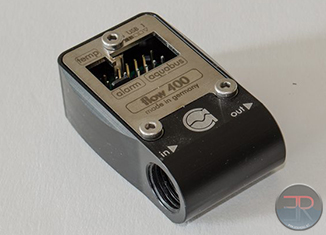Usage Scenarios
The MPS 400 was never designed to replace an accurate flow meter and it was really designed for two types of people. The first just want to know whether their flow has changed significantly. They are worried about a pump dying or a leak or a blockage. The second group of people are interested in their performance. Is their flow too low or too high. They are concerned whether they need to buy a different (or second) pump or whether they can turn the pump down and decrease noise. The usual metric for good performance is to be above 1GPM, larger gains are made before this flow rate and small gains afterwards. In this sensor we’ve seen that it can easily be 0.2-0.3 GPM off across this critical range. This means that for these users a personal calibration is useful because the provided calibration may not be good enough to prevent them buying an unnecessary pump. However as we’ve seen the flow sensor is actually much better than the supplied calibration let’s it be. For someone with the means to calibrate the sensor for their setup and average the data then very good accuracy can be achieved and this means that for someone like myself it can be used for more than the original intent.
Summary
Overall this device packs a bunch of features into a tiny package. The flow rate sensor is actually very good and much better than expected but it’s let down by poor matching to the calibration table. For some users it will serve the needs of a high-flow low failure risk meter that is good for coarse estimates. For those looking for accuracy you will need to calibrate it after which it can be very accurate. The internal temperature sensor is also best ignored. Given the price of $68 it might be assumed that if you’re willing to pay for the MPS400 you wouldn’t mind spending another $10 for a temperature probe.]












[…] sensors will be compatible – only the pulse style that is most common. Not the fancy new AquaComputer […]
How would you recommend calibrating this sensor suite (flow, temps) in a system? Any specific tool? Should it be re-calibrated once in a while?
I just found out that my multimeter has a type k thermal probe (no idea what that means, though). Is that enough to calibrate the internal thermal sensor of the mps?
Hah well thermal probes themselves often need to be calibrated. Since that review was written AquaComputer fixed the bug with the non linearity, so it should be a lot better now. Unless you’re really testing stuff it’s probably good enough to be honest. If it’s not it’s probably easier to buy a 10$ probe and add it in the loop instead.
Comments are closed.